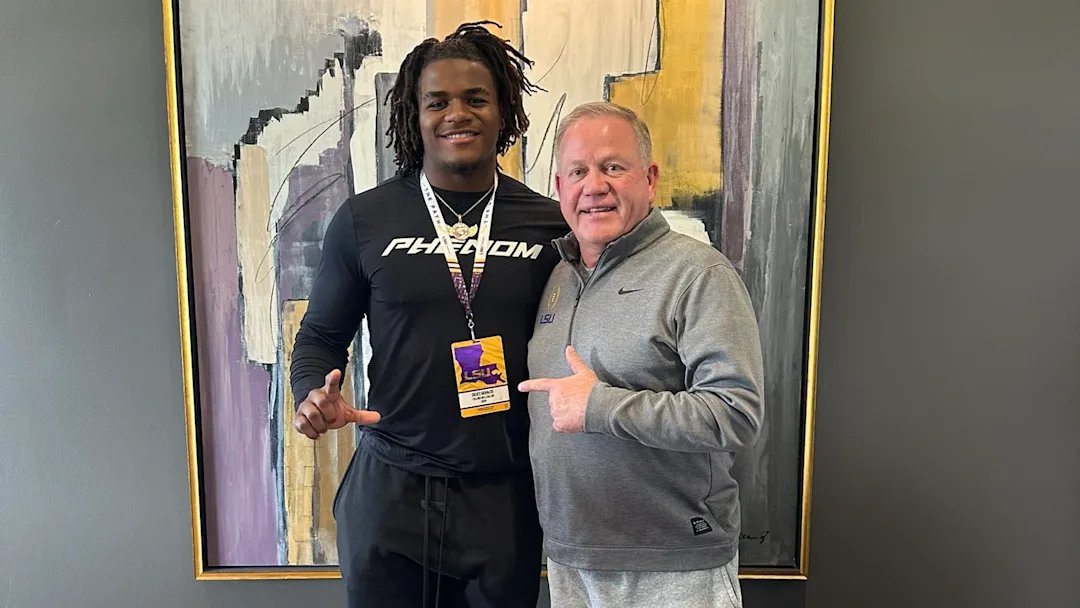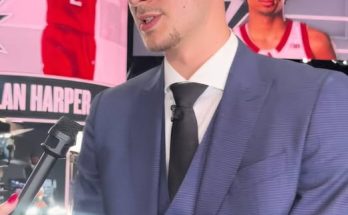BATON ROUGE — The recruiting wars in college football are heating up, and LSU is right in the thick of one of the most intense battles of the 2025 cycle. The Tigers are going head-to-head with two of the sport’s perennial juggernauts — the Alabama Crimson Tide and the Ohio State Buckeyes — for one of the top defensive players in the country. The highly touted prospect, whose name is resonating across the recruiting landscape, has emerged as a top target for all three programs as each seeks to bolster its future defensive unit with elite talent.
Standing at 6-foot-4 and weighing in at 240 pounds, the four-star edge rusher from the Southeast has captivated scouts and coaches with his explosive first step, relentless motor, and versatility to drop into coverage or attack the quarterback. His blend of size, athleticism, and raw power makes him a nightmare matchup for opposing offenses and a dream addition for defensive coordinators. Ranked firmly in the top 10 nationally among defenders, he’s considered a program-changer — the kind of athlete that elevates a defense from solid to championship-caliber.
For LSU, this recruitment is about more than just landing an elite talent. It represents a continued push to reassert its dominance on the national stage under head coach Brian Kelly. Since his arrival in Baton Rouge, Kelly has made it clear that returning the Tigers to the pinnacle of college football requires not only elite quarterback play and explosive offense, but also a dominant, disciplined defense that can win games in the trenches. Adding a player of this caliber would send a loud message to the rest of the SEC — and the nation — that LSU isn’t just back, it’s building something formidable.
Recruiting insiders close to the situation suggest that the Tigers have done an exceptional job in building a relationship with the defender and his family. Defensive line coach Jimmy Lindsey and defensive coordinator Blake Baker have been instrumental in laying the groundwork, making multiple visits and highlighting LSU’s recent success in developing NFL-ready defensive linemen. LSU’s rich tradition of producing top-tier talent at the position — from Glenn Dorsey to Barkevious Mingo to more recent standouts — hasn’t gone unnoticed by the prospect and his inner circle.
That said, the road to a commitment won’t be easy. Alabama, under new head coach Kalen DeBoer, remains a formidable force on the trail. Though Nick Saban’s retirement shifted the college football power balance, the Crimson Tide have wasted no time reasserting themselves with a refreshed staff and renewed energy. Alabama’s pitch is simple but effective: tradition, championships, and a clear pathway to the NFL. The prospect has visited Tuscaloosa twice in the past six months, and the Tide are reportedly squarely in the mix. Their defensive pedigree and relentless recruiting efforts remain a major factor in his decision-making process.
Meanwhile, Ohio State, long regarded as a defensive powerhouse in the Big Ten, is also making a serious play. Defensive coordinator Jim Knowles and his staff are pushing hard, emphasizing scheme fit and player development. The Buckeyes are selling the idea of being the centerpiece of a defense that is poised to dominate in both the Big Ten and the expanded College Football Playoff. They’ve brought him up for an unofficial visit and are expected to host him again for an official visit this summer. With a strong track record of sending edge rushers to the NFL — from Joey and Nick Bosa to Chase Young — Ohio State is making a compelling case.
What makes this battle especially fascinating is the differing approaches each program is taking. LSU is selling immediate opportunity and SEC exposure, Alabama is leaning into its culture of winning and NFL production, and Ohio State is pushing the idea of building a legacy in a conference on the rise. All three schools offer top-tier facilities, elite coaching, national exposure, and a direct path to the next level. Ultimately, it may come down to personal relationships, comfort level, and the vision each program presents for the next three to four years.



